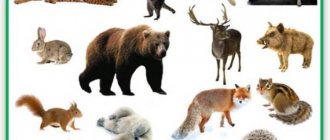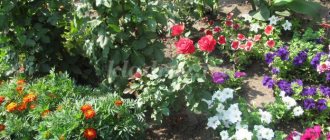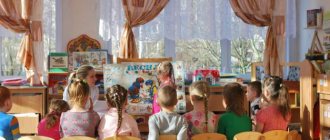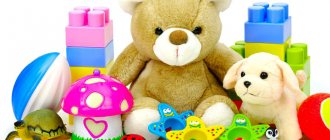Diary of observations of plant growth as part of the “Vegetable garden on the windowsill” competition
Kosenkova Marina
Diary of observations of plant growth as part of the competition “Vegetable garden on the windowsill”
Kindergarten is the first link in the system of continuous environmental education, so it is no coincidence that I was faced with the task of forming the foundations of a culture of rational environmental management among preschoolers. the vegetable garden and flower garden to develop children’s skills in caring for plants , familiarizing them with the main vegetable crops and their importance in our diet.
The goal of my work was to interest children in observing the life of plants ; teach how to keep a diary of observation of plant development .
During the observations, children gained an understanding of growing plants from seeds , the dependence of their growth and the availability of moisture , light and heat.
We learned to see changes in plant , analyze, and draw conclusions about certain patterns and relationships.
The pupils developed cognitive interest; ability to analyze and synthesize, to self-control.
The labor skills of children were improved; hard work developed.
Attached files:
Photo report “Our beloved vegetable garden gives a lot of good things... A vegetable garden on the windowsill” A vegetable garden on the windowsill in a preschool educational institution promotes the development of curiosity and observation in children, forms a positive attitude towards work.
“Vegetable garden on the windowsill” A cold, snow-white winter has arrived! To support ourselves with vitamins, my children and I plant a vegetable garden on the windowsill every year! The plantings have already begun. Vegetable garden on the windowsill To introduce children to seasonal changes in wildlife, every spring we plant a vegetable garden on the windowsill. Work in the garden for preschoolers. Diary of weather observations Diary of weather observations. One of the methods of environmental education of preschool children is observation. Every day we go for a walk. Lesson summary for the second junior group “Vegetable garden on the windowsill and all about the benefits of cultivated plants” Goal: to develop children’s interest in experimental and research activities in growing cultivated plants indoors. Our vegetable garden on the windowsill Spring is in no hurry to come into its own, it’s frosty outside, but the sun has begun to peek out more often and warm up, which means it’s time to get busy. Vegetable garden on the windowsill Vegetable garden on the windowsill. Photo report. Having seen enough of my colleagues’ “garden” work posted on MAAM. RU, I got inspired and decided that the vegetable garden was in order. Unique properties of plants in our “Flower garden on the windowsill” In our “Flower garden on the windowsill” the following were planted: marigolds, oxalis, nasturtium. When I was preparing a presentation of our flower garden for the commission. Source
Preview:
Municipal budgetary preschool educational institution
“Kindergarten No. 22 “Crane” in the city of Safonovo, Smolensk region
Summary of direct educational activities
Educational field "Cognitive development"
section "Labor education"
“Caring for indoor plants. Watering"
Prepared by: Elena Viktorovna Usova
teacher of the highest qualification category
Goal: Consolidate knowledge about the basic needs of indoor plants.
1. Develop an interest in indoor plants.
2. Strengthen the skills of caring for indoor plants
3. To instill in children an interest in plants, a desire to observe and carefully care for them
Materials: aprons, rags, watering cans, a basin of water, card diagrams for caring for plants, several balsam sprouts planted in pots.
Preliminary work: conversation about indoor plants; reading poems and riddles about plants; looking at indoor plants; working together to care for plants; work according to the schemes “Plant needs”, “Watering indoor plants”.
Educator: Guys, guess the riddle:
The windows are green,
(Children guess that these are plants).
2. Conversation about indoor plants:
Educator: Guys, it’s spring outside, and at this time all living things are awakening from sleep. Tell me, why can we say about plants that they are alive? What are the signs of a living thing? (because plants grow, reproduce, breathe, eat, die).
Educator: Correct. Plants also absorb bad air, make us happy and calm, decorate our home, move, turning towards the sun. Educator: Tell me, what are the names of the plants that grow in pots in the room?
Educator: Correct. Plants are all different and they have different names. (I show and name some flowers).
Educator: Name the flowers that grow in our group. (zonal geranium, Uzambara violet, balsam, chlorophytum, coleus, Decembrist (zygocactus).
Educator: We told you that all plants are living. And since they are alive, they cannot be ignored. In order for them to grow and bloom, they need to be looked after.
Educator: What does it mean to care for flowers? (children's answers)
Educator: Yes. First, the plant must be planted in the ground, then water it with water, loosen the soil, and also, every flower definitely needs light and warmth.
Educator: It turns out that you know a lot about how to care for plants that live in houses next to each other.
The flower was sleeping and suddenly woke up, (torso to the right, to the left.)
I didn’t want to sleep anymore, (torso forward, backward.)
He moved, stretched, (Hands up, stretch.)
He soared up and flew. (Hands up, right, left.)
The sun will just wake up in the morning,
The butterfly circles and curls. (Spin around.)
Educator (shows table-drawings of caring for indoor plants): Guys, try to guess from these tables which of the works on caring for our flowers are depicted here. (Water, spray, loosen, remove dust from leaves)
Educator: Guys, you and I drink water whenever we want. Animals too. How do we know if our plants are thirsty? We decided to water them, but maybe they don’t need water at all now? (children's answers)
(If children find it difficult, then leading questions are asked)
Educator: That's right, well done! Plants should be watered when the soil is dry to the touch and the leaves are limp.
Educator: Do we have such a plant in our group? (No). And here it is (indoor balsam is placed on the table in a state of wilting). Compare these two balsams: how are they different? Why? They didn’t forget to water it, but deliberately didn’t water it for several days so that you could see what would happen to the flower if it wasn’t watered. Impatiens love moisture very much. They need a lot of water. In summer, the soil in the pot should always be moist. In winter, excess moisture should not be allowed, as the plant will rot. Remember: no plant should be allowed to wilt; it will make it very sick.
Educator: Guys, who wants to try to water our wet Vanka or Impatiens - that’s what people call him?
(The child takes a watering can and waters the flowers from above.)
Educator: Guys, was the flower watered correctly? (answers). No, you can’t water flowers like that. It is necessary to water carefully, in a thin stream, press the spout of the watering can to the edge of the pot, and do not pour water on the leaves. Like this (showing how to water flowers). Also, the water should be settled and at room temperature.
Educator: Children, tell me, why should the water be poured in a thin stream and not directly at the root? (Children's answers)
Educator: If you water with a strong stream, the soil of the pot will be washed onto the table and there will be dirt. And most importantly, with a strong stream you can expose the roots of the flower and they will dry out.
Educator: Now look at your plants (everyone has one pot with a balsam sprout on the table). Do they need to be watered? Why do you think so? (the soil in the flower is dry and light)
Educator: That's right, if the soil is light, dry to the touch, even sometimes in cracks, then it needs to be watered.
3. Practical work on watering; as it progresses, the teacher corrects the children’s actions:
Educator: We take watering cans and start watering. If you have already watered your plant, watch what happens to the water. (some people quickly pour water into the saucer, some don’t. What conclusion can be drawn? (children’s answers).
Educator: That’s right, if you pour slowly, then not so much water runs out, but if it’s all at once, then a lot).
Educator: So, how will you water the plants at home and in the group? What will you do if water leaks past? (Children's answers). Find on your tables what you will use to wipe up spilled water, wipe everything carefully, rinse the cloth in a bowl of water (children clean up the tables, put the plants in the place indicated by the teacher, wash their hands).
Educator: Are you satisfied with your work? What can you teach your mother or anyone else at home today? (Children's answers) How do you know if your plants need to be watered? What kind of water should I take?
Summary of the walk “Observation and participation in planting seedlings in the garden”
Irina Krasilshchikova
Summary of the walk “Observation and participation in planting seedlings in the garden”
Summary of the walk “ Observation and participation in planting seedlings in the garden .”
Goal: to develop in children a system of ideas about the growth and development of plants;
an exercise in planting seedling .
Walking progress:
Before going for a walk , the teacher draws the children’s attention to the garden on the windowsill in the group. Together with the pupils, he recalls what they planted and how they looked after him. It is noteworthy that from the seeds that were planted in the ground in early spring, small sprouts first appeared, which the guys continued to care for (watered, loosened)
.
All the cups with seedlings that the guys planted are signed. See whose has grown more. And now the sprouts have grown and the time has come to plant the seedlings in open ground and continue to care for them in order to get a harvest. You should ask the children why this needs to be done now, in the month of May, and not a month ago. If children find it difficult, bring them to the understanding that for a plant to grow in open ground, it needs warmth, warm soil , and a sufficient amount of sunlight.
Directly in the kindergarten garden, the teacher tells and shows the children planting techniques. Encourages children to help as much as possible. Ideally, each child should plant of seedlings in the ground . After planting all the seedlings, the children help the teacher water the beds.
After finishing work in the garden , ask the children
- what did we do today?
— did the children like helping the teacher?
Well done! And now we will monitor and care for our garden !
Summary of the lesson “Observing the growth of tomato and pepper seedlings” in the senior group Integration of educational areas: “Cognitive development”, “Speech development”, “Socio-communicative development” Purpose: To consolidate. Summary of the walk “Observing the flower garden” Purpose of the walk: Continue to teach children to observe the growth and development of flowers, cultivate interest, the desire to care for and grow flowers; consolidate. Summary of the walk “Observing the frost” Purpose of the walk: to develop observation and curiosity in the process of becoming familiar with natural phenomena; arouse interest in the surroundings. Summary of the walk “Observing a cat” Purpose: to form an idea of the appearance of a cat, to expand ideas about cat breeds. Objectives: Educational: clarify ideas. Summary of the walk “Observing puddles” Purpose of the walk: To expand children’s understanding of the signs of spring; expand and deepen knowledge about changes occurring in inanimate nature; Summary of the walk “Observing the snow” Purpose of the walk: to clarify children’s ideas about the properties of snow, to develop observation and curiosity in the process of becoming familiar with. Summary of the walk “Observing seedlings in the garden after the rain” Purpose of the walk: to teach children to establish a connection between the state of the plant and the conditions in which it is located, caring for it; form. Summary of the walk “Observing seedlings in the garden after rain or watering” Purpose of the walk: To teach children to establish a connection between the state of plants and the conditions in which it is located, caring for them; form. Summary of the walk “Planting winter garlic in the garden” with children of the preparatory group Purpose: To give an idea of a person’s autumn preparations for winter in the garden, planting cloves of winter garlic. Tasks: Form an idea.
Source
MAGAZINE Preschooler.RF
Design project: “Our new flowerbed” senior groupRelevance:
The need for new experiences is one of the most important for a child. In accordance with this, our project is aimed at expanding sensory experience and developing the senses. Awakening the ability to contemplate in a growing person is impossible without developing the habit of peering and listening to the natural world and enjoying its aroma. Therefore, we, as a group, studied literature and Internet resources about ornamental plants that are favorable for our climate, and decided to landscape the flowerbed of our site. During the implementation of this project, we expect that children will not only learn the names of flowers and their appearance, but also their useful qualities. Through research, we will get acquainted with garden flowers, the characteristics of their life, and the conditions for their growth. Children learn many new words - concepts and names.
In the process of work, the development of cognitive processes and feelings of sympathy will naturally occur. Communication skills will be of particular importance, aimed not only at children’s conflict-free communication with each other, but also at caring for nature in general. Organizing the work of a preschooler in a flower garden or on a site creates conditions for their conscious application of knowledge and for the formation of other skills in a humane attitude towards living things. In addition, the activity should be accompanied by positive emotions. Be sure to be passionate about the process of activity itself. While conducting a tour of the kindergarten territory, the children's attention was drawn to the empty flower beds and they came to the conclusion that they needed to create new flower beds and plant them with flowers. The teacher invited the children to help adults with the design of flower beds and choose flowers for planting. Problem: While conducting a tour of the kindergarten territory, we drew the children’s attention to the flower beds left over from last year. The children remembered what flowers grew in these flower beds and how beautiful it was all last summer. This year we don’t know how to design the flower beds and what flowers to plant in them. They asked the children to help the adults, to suggest how to design a plot or a flower bed. The children expressed their ideas and assumptions: (you can plant a lot of flowers, put up benches and come here to relax; you can make a flowerbed in the shape of some kind of animal; you can make a flowerbed around a tree, etc.). Plants will delight us with flowering all summer and part of autumn. This will be a place where we can not only relax, but also observe the growth of flowers and their living conditions.
Hypothesis: The world surrounding a child is, first of all, the world of nature with an endless wealth of phenomena, with inexhaustible beauty, and it is nature that is the eternal source of the child’s mind. Knowledge of nature is possible only through direct interaction with it. The goal of the project: to form in children an understanding of the diversity of plants and their use by humans for decoration purposes. Project objectives: - to give children knowledge about flowers as useful plants; — introduce the profession of designer; — expand ideas about ornamental plants; - to form an active position - not an indifferent contemplation, but an active and cultural participant in the process of solving environmental problems; - grow plants for the flowerbed; — teach children to notice the beauty of flowers in a flowerbed, cultivate a sense of admiration; — to create a desire to communicate with nature, to cultivate a caring attitude towards people’s work; - involve parents in planting plants in the flowerbed!
Expected result: - children’s ideas about ornamental plants are expanded; — an active position has been formed as an active and cultural participant in the process of solving environmental problems (flower beds on the territory of the kindergarten and in the yard of one’s house); — a caring attitude towards people’s work and a desire to communicate with nature have been formed.
Project type: Creative, short-term (February-June);
Composition of participants: - pupils of the senior group (5 - 6 years old) - educators; - parents.
Project support: - Nature center in the group, flower garden on the kindergarten site. — Methodological material. — Visual material:
a) fresh flowers, illustrated, made from different materials b) printed board games on ecology; c) didactic games on ecology; d) library of a young florist. Equipment with natural and waste materials.
Main directions: Work on the project was carried out in three stages.
I. Preparatory stage - February
- Questionnaire for parents of pupils: “What do we know about flowers”
- ECD “Flowers - the beauty of nature” Purpose: To clarify children’s knowledge about garden flowers. Reinforce the idea of the structure of a flower (stem, leaves, flowers). Continue teaching children to answer the teacher’s questions. Activate children's vocabulary. Teach children to see beauty in the familiar. Cultivate cognitive interest and aesthetic feelings.
- Examination of illustrations, postcards with images of flowers. Enriching and expanding the understanding of the world around us; explaining to children in an accessible form about the need to protect nature.
- Conversation on the topic: “Flowerbed” Purpose: To introduce children to the professions of people associated with floriculture, to note the importance and role of flowers for the life and activities of humans, animals, insects, to cultivate a caring attitude towards flowers, and the ability to take care of them.
- Examination of seeds.
Purpose: To introduce the conditions necessary for the growth and development of plants.
6. Exhibition of drawings “Our New Flowerbed” Purpose: To learn to convey parts of a plant in a drawing, to consolidate the ability to paint with a brush and paints, to hold a brush correctly, to improve the ability to examine drawings, to choose the best, to develop aesthetic perception. 7.Assistance by parents in purchasing seeds and necessary equipment for planting flowers. Goal: To interest parents in the project.
II. Main stage – March – April
- Experimental work: “Planting flower seeds: marigold, petunias . Goal: To introduce children to planting techniques (plant in holes, sprinkle with soil, water). Practice using survey actions. Introduce into the active dictionary words denoting the signs of a seed and the actions of children associated with planting. Generate interest in planting seeds.
- Research activity: “Observing seedlings” Purpose: Daily care of flower seedlings. Develop cognitive interest based on observations and experiments. Develop certain work skills. Continue to develop a caring attitude toward plants and a desire to help the teacher care for them.
- Making riddles and puzzles. Goal: To develop children's cognitive interest through game tasks.
- Learning and reading poems about flowers. Goal: To consolidate children’s ideas about flowers, help broaden their horizons, stimulate cognitive interest, cultivate a love of nature and respect for it.
- Reading fiction, educational literature. Goal: To develop communication skills, dialogic speech, the ability to answer in coherent sentences, to evoke positive emotions in children using artistic expression.
- Examination of illustrations, postcards with images of flowers. Goal: Consolidating knowledge about the structure of a flower, developing an emotional and value-based attitude towards artistic images.
- Listening to music: Y. Antonov “Don’t pick the flowers” , P. I. Tchaikovsky “The Seasons Cycle” , “Waltz of the Flowers” . Formation of the foundations of musical culture in children.
Research activities:
- Experiment “What soil is best to plant a plant in?” Identify the properties of the earth: it has weight, black color, the soil is loose. Soil in containers.
- Research activity “What does a plant need?”
Bring children to the conclusion about the need for moisture for plant growth, the need for heat and light for plant growth, and the dependence of their development on sunlight. Germinate seeds on a windowsill and in a dark place. Observe the movement of plants reaching towards the light.
3. "Planting Flower Seeds"
Lead the children to the conclusion where seeds germinate better in open ground or in containers. Germinate seeds in containers and in open ground with regular watering.
4. "Man and Plant"
Determine how much the plant needs human care. Two containers with soil and sprouted flower sprouts (children water one container, loosen the soil, choose a sunny place, the other is not watered, do not loosen, put in a dark place) - if you do not water the flowers for a long time, the leaves wither and the flower falls; - where the seeds will germinate quickly (in the sun, in a dark place or away from sunlight). Goal: To develop cognitive interest based on observations and experiments. Cultivate a caring attitude towards plants.
Card index of didactic games + TRIZ
“Guess the flower by description” , “Guess the flower by riddle, by illustration” ; “Gather the pictures in a row” ; “In the garden, on the field, in the vegetable garden” , “Flowers” . Goal: To clarify knowledge about the structure of a flower - stem, leaves, flower, to develop the creative imagination of children.
Outdoor games: “We are flowers” , “Living flowerbed” , “Magic wand” , “Find your place” , “Favorite flower” , “Gardener” . Goal: Expand children's knowledge about colors; replenish vocabulary, develop the ability to act on a signal from the teacher, the ability to coordinate movements with words, dexterity.
Role-playing games: “Flower shop.
Goal: To introduce children to the professions of a florist, teach them to distribute roles, develop a plot and act according to the role they have assumed. Strengthen the ability to distinguish colors, name them quickly, find the right flower among others; teach children to group plants by color, make beautiful bouquets, and reinforce the rules of behavior in public places.
Joint creative work of children and parents on the topic: “Our new flowerbed” (exhibition of works). Goal: To attract parents to a creative competition and evoke positive emotions.
III. Final stage (May – June)
- "Day of Good Deeds" . Goal: Involving parents in creating a flower bed on the territory of the kindergarten.
- Planting seedlings in flower beds, designing flower beds. Goal: Creating a cohesive team among students, their parents and educators. Joint creation of a flower bed, manifestation of imagination and creativity.
- Flower garden care. Goal: Continue to develop a caring attitude towards plants, a desire to help the teacher in caring for them.
- Exchange of impressions based on the results of the work. Goal: Together with parents, help children experience a sense of joy and satisfaction from participating in joint activities with adults.
Diagnostics
To determine the level of environmental awareness of children in the older group, diagnostics were carried out in February and at the end of March.
1. The child’s ideas about living things; 2. Knowledge about nature conservation; 3. Relationships with plants in natural conditions; 4. Relationships with plants in specially created conditions; 5. Plant care.
Children's knowledge and skills were assessed at three levels: LOW, MEDIUM, HIGH.
LOW LEVEL:
Ideas about natural objects and their essential features are superficial. Plants are not considered living objects. Labor processes are not performed independently. The quality of work is low. Characterized by an unstable attitude towards plants without a pronounced positive orientation. They motivate the need to take care of nature by fear of punishment or cannot explain it, claiming that . ”
AVERAGE LEVEL:
Children distinguish a large number of natural objects. Establish private and some general connections. They carry out labor processes independently and achieve good results. But often they are carried away by the process of performing labor actions. Children in general show a positive, selective attitude toward nature. They notice violations of the rules of behavior in nature, motivating the need to comply with them by individual values of natural objects.
HIGH LEVEL:
Children have formed a wide range of ideas about nature. They know the main signs of living things. They master subject concepts, establish private and general connections. They treat nature with care and humaneness, and are intolerant of other children and adults in the event of different rules for communicating with nature. We are ready to provide all possible assistance if necessary. Emotionally responsive to the beauty of nature.
Conclusion: Thus, while working on the project: “Our new flowerbed ,” we expanded our understanding of ornamental plants; learned which plants are most favorable for our climate; learned how to properly plant seedlings of different flowers (petunias and marigolds). The children took a responsible approach to the issue of arranging flowers in the flower beds of the site, and were very interested in decorating the site with flowers. This project opened up the possibility of forming your own!
a child’s life experience in interacting with the outside world. The participation of children in this project allowed them to form value orientations that determine a caring attitude towards the natural and man-made world. Involving parents of students in joint activities with children within the framework of the project created an atmosphere of warmth and trust between them and the teaching staff, and expanded their knowledge about the rules for selecting plants for a flower bed. An important result of the project was the joint creativity of all parents.
Used Books
- Partial programs for environmental education of preschool children: Nikolaeva S. N. “Methods of environmental education in kindergarten” ;
- Ryzhova N. A. “Environmental education in kindergarten” ;
- Internet resources
| Next > |
Methodical manual “Observation Diary”
Goal: To interest children in observing the life of plants; teach how to keep a diary of observation of plant development.
Progress of the lesson
How vegetables will not be born without our help. As soon as spring has arrived, we plant seeds. What a garden! The people are surprised: the sun warmed the earth, a grain sprouted. Cucumbers, carrots and onions suddenly climbed out of the ground. What a garden! People are surprised. Exactly three peas were thrown into the ground, and five bags of wonderful pods were collected. What a garden! People are surprised.
Observation is a purposeful, systematic perception of objects and phenomena of the surrounding world.
To accumulate knowledge about plant growth and development, I use long-term observation. Children compare the observed state of the object with what was before. An observation calendar helps with this.
Work. Work in nature is of particular importance for the all-round development of children.
Preschoolers master skills as they follow plants and learn what conditions are necessary for growth and development. With pleasure, children learn to loosen and weed the garden, water vegetables, and watch with great interest the growth and development of plants, noting their observations in the observation calendar.
The manual attracts children to participate in all types of work on caring for plants, growing them, and fosters independence.
It is important that children are not just excited about the prospect of growing delicious vegetables. The manual helps to understand the need for systematic plant care. At the same time, children should be guided by the structural features of plants, the period of growth and development and their needs.
Children receive tasks that require careful monitoring of the condition of the plant.
Use of benefits by age
A consciously correct attitude towards nature is built on a sensory perception of nature, an emotional attitude towards it and knowledge about the characteristics of life, growth and development of individual living beings. The predominant visual-effective and visual-figurative forms of thinking in preschool childhood ensure the assimilation of only specially selected and age-appropriate information about nature. The criteria for selecting natural materials are their visual presentation and the possibility of inclusion in practical activities.
Source






